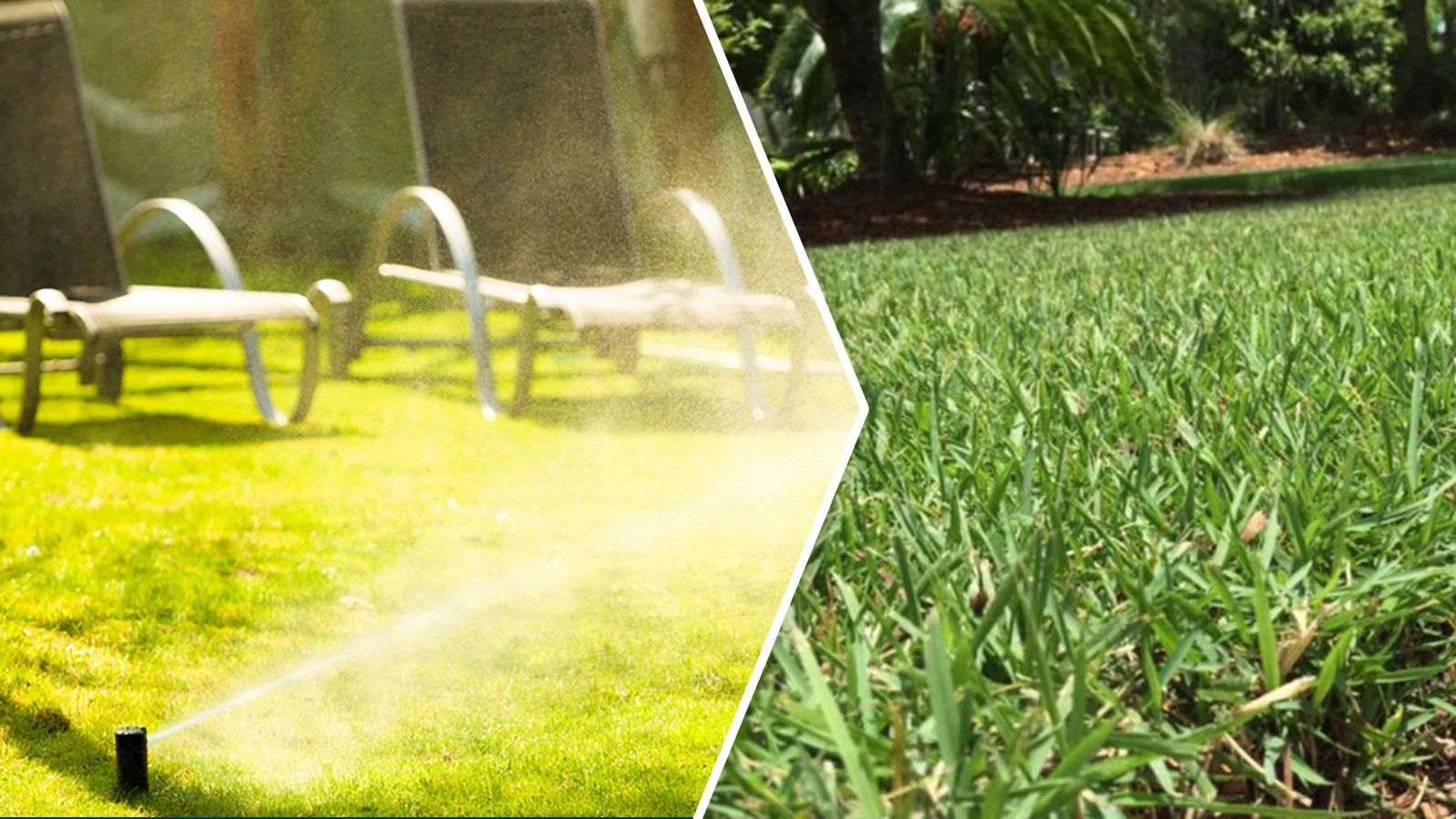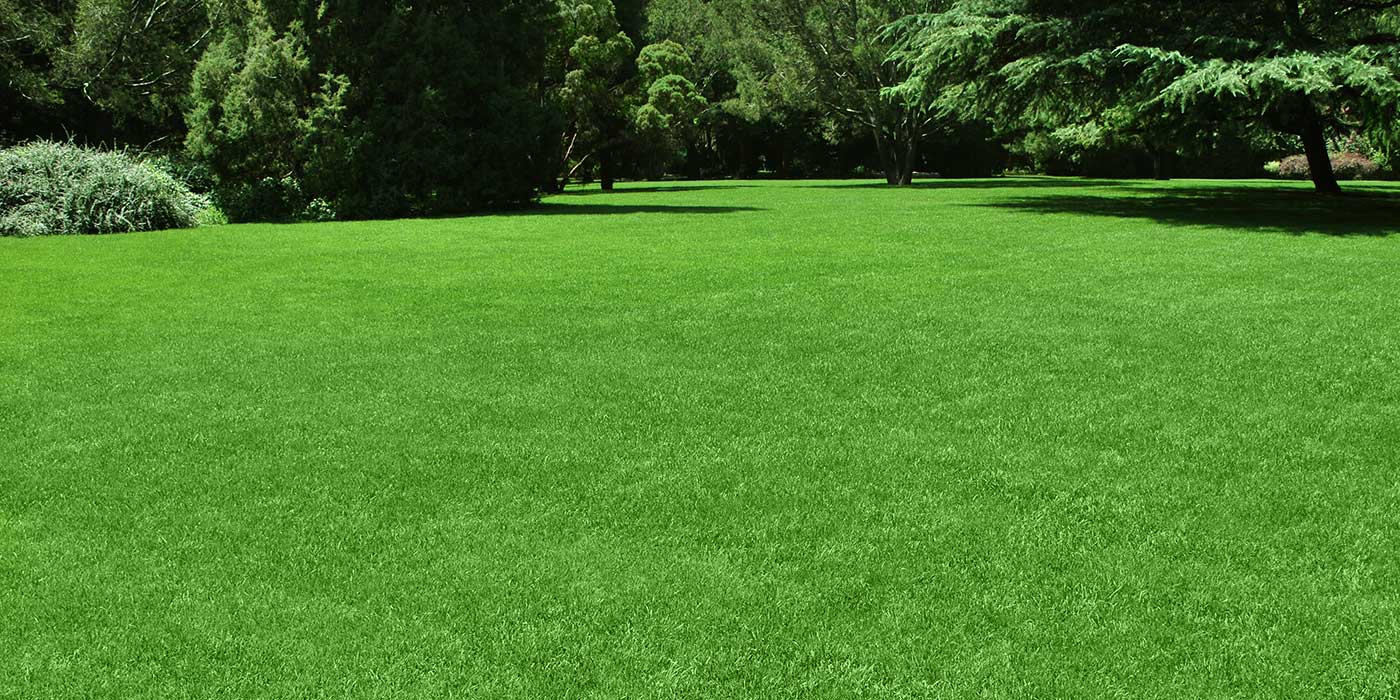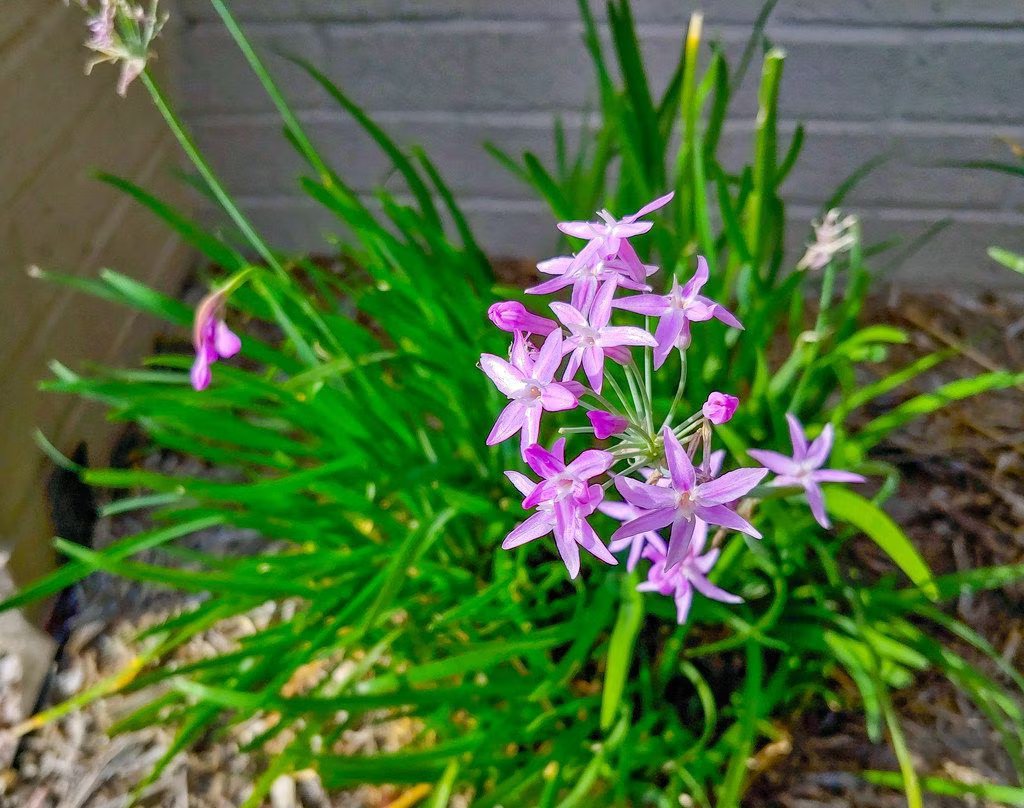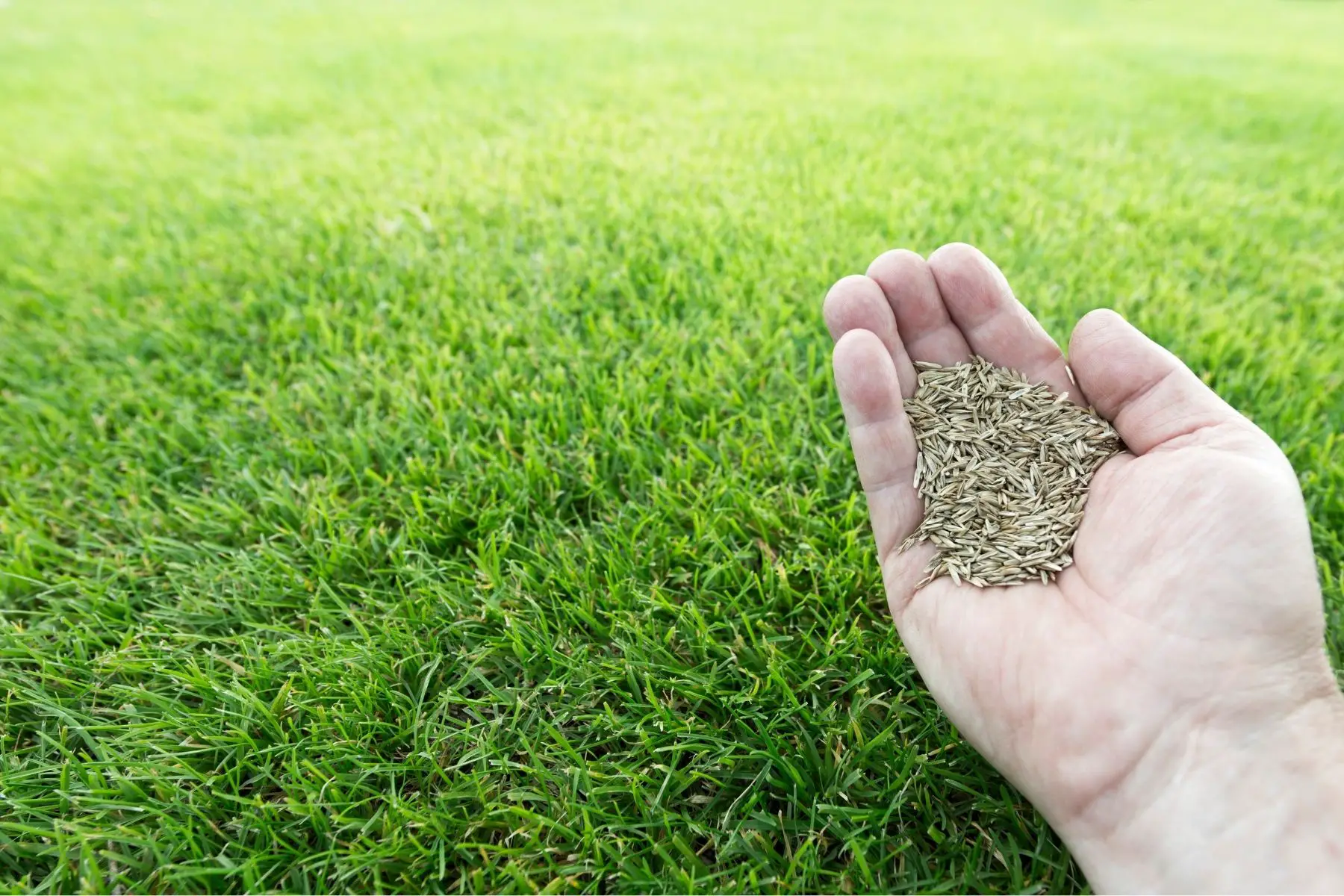Home>Gardening Techniques>What Is The Best Fertilizer For Grass In The Fall?


Gardening Techniques
What Is The Best Fertilizer For Grass In The Fall?
Modified: January 22, 2024
Learn about the best fall fertilizer for grass and enhance your seasonal gardening efforts. Discover effective tips for achieving a lush lawn.
(Many of the links in this article redirect to a specific reviewed product. Your purchase of these products through affiliate links helps to generate commission for Chicagolandgardening.com, at no extra cost. Learn more)
Table of Contents
- Introduction
- Understanding the Importance of Fall Fertilization for Grass
- Factors to Consider When Choosing the Best Fertilizer for Fall
- Nitrogen-Rich Fertilizers
- Phosphorus-Based Fertilizers
- Potassium-Enhanced Fertilizers
- Organic Fertilizers for Fall Application
- Slow-Release Fertilizer Options
- Best Time to Apply Fall Fertilizer
- Tips for Proper Application of Fall Fertilizer
- Conclusion
Introduction
Welcome to the world of seasonal gardening! As a gardening enthusiast, you understand the importance of nurturing your plants throughout the year to ensure their healthy growth and vibrant appearance. And when it comes to maintaining a lush and green lawn, fall is a crucial season for providing the necessary nutrients and care.
Fall fertilization plays a key role in promoting strong root development, improving stress tolerance, and preparing the grass for the harsh conditions of winter. By providing the right type and amount of fertilizer, you can help your grass thrive during the dormant months and ensure its revival come springtime.
But with so many options available, it’s important to know which fertilizer is best suited for your grass during the fall season. Different grass types have varying nutritional requirements, and understanding these requirements is essential for making an informed decision.
Throughout this article, we will explore the factors to consider when choosing the best fertilizer for fall, including the different types of nutrients needed, organic options, and even the best time for application. By the end, you’ll have a solid understanding of fall fertilization and be ready to give your grass the nourishment it needs to thrive.
Understanding the Importance of Fall Fertilization for Grass
Fall is a critical time for grass, as it undergoes a significant transition in preparation for the upcoming winter months. As the days grow shorter and temperatures start to drop, grass slows down its growth and redirects its energy towards strengthening its roots. This shift in focus makes fall the perfect time for fertilization.
One of the primary benefits of fall fertilization is the promotion of root development. When you apply fertilizer during this season, you’re providing essential nutrients that the grass can absorb and utilize to strengthen its roots. A robust root system is key to a healthy lawn, as it enhances the grass’s ability to absorb water and nutrients, improves its resistance to disease and pests, and makes it more tolerant to winter stresses.
In addition to root development, fall fertilization also helps to improve the overall stress tolerance of your grass. Cold temperatures, frost, and even foot traffic can all take a toll on your lawn during the winter months. By providing the necessary nutrients through fertilization, you’re equipping your grass with the tools it needs to withstand these stresses and maintain its vitality throughout the dormant season.
Another advantage of fall fertilization is the preparation it provides for the following spring. When you fertilize in the fall, the nutrients are stored in the grass’s roots and rhizomes, allowing it to have a head start when the temperatures rise and growth resumes. The stored nutrients will fuel early spring green-up, giving your lawn a lush, healthy appearance from the very beginning of the growing season.
It’s important to note that fall fertilization is not intended to promote excessive growth. Instead, the goal is to provide a slow release of nutrients that will steadily nourish the grass throughout the winter without causing a sudden burst of growth that would be vulnerable to cold temperatures.
Overall, fall fertilization sets the stage for a thriving lawn. By focusing on root development, stress tolerance, and early spring growth, you’re ensuring that your grass remains healthy and resilient year-round. The next step is to understand the specific factors to consider when choosing the best fertilizer for fall, which we’ll dive into in the next section.
Factors to Consider When Choosing the Best Fertilizer for Fall
When it comes to selecting the best fertilizer for fall, there are several key factors to consider. These factors will help you choose a product that suits the specific needs of your grass and provides the necessary nutrients for its growth and vitality during the fall season.
- Grass Type: Different grass types have varying nutritional requirements. It’s important to identify the specific type of grass you have in your lawn, whether it’s cool-season grass like Kentucky bluegrass or warm-season grass like Bermuda grass. Understanding your grass type will guide you in choosing a fertilizer that meets its unique needs.
- Nutrient Content: Fertilizers typically contain three primary nutrients: nitrogen (N), phosphorus (P), and potassium (K). These nutrients play different roles in the growth and development of grass. Nitrogen promotes leaf and shoot growth, phosphorus aids in root development, and potassium enhances overall plant health and stress tolerance. Consider the nutrient content of the fertilizer and ensure it meets the specific requirements of your grass type.
- Ratio of Nutrients: The ratio of nutrients in the fertilizer is another essential factor to consider. This ratio is represented by three numbers on the fertilizer packaging, such as 10-10-10 or 16-4-8. These numbers indicate the percentage of nitrogen, phosphorus, and potassium, respectively. The ideal ratio will depend on your grass type and its stage of growth.
- Organic or Synthetic: You’ll also need to decide between organic or synthetic fertilizers. Organic fertilizers are derived from natural sources and release nutrients slowly over time. They are rich in organic matter and can improve soil health. Synthetic fertilizers, on the other hand, are manufactured and provide a quick-release of nutrients. Consider your preferences and the overall health of your lawn when making this choice.
- Application Method: Consider the application method that works best for you. Fertilizers can come in granular form, which is spread evenly across the lawn, or liquid form, which can be sprayed. Choose an application method that you find convenient and effective.
By taking these factors into account when choosing a fall fertilizer, you will be able to make an informed decision that promotes the health and vitality of your lawn. In the next sections, we will explore different types of fertilizers that are suitable for fall application.
Nitrogen-Rich Fertilizers
Nitrogen is a vital nutrient for the growth and development of grass. It plays a key role in promoting lush and green foliage, making it an important consideration when choosing a fall fertilizer. Nitrogen-rich fertilizers can provide a boost of this essential nutrient to your grass, helping it thrive during the fall season.
There are two main types of nitrogen fertilizers: quick-release and slow-release. Quick-release fertilizers provide an immediate burst of nitrogen to the grass, promoting rapid growth. They are ideal for lawns that need a quick boost or for repairing patches. However, their effects are short-lived, so they may not be the best choice for long-term lawn health.
On the other hand, slow-release nitrogen fertilizers release nutrients gradually over time, providing a consistent supply to the grass. They are effective for promoting steady, sustained growth and are often recommended for fall fertilization. Slow-release fertilizers help avoid excessive growth and the potential for cold damage, while still providing the necessary nutrients for the grass to stay healthy throughout the dormant season.
When choosing a nitrogen-rich fertilizer, be mindful of the ratio of nitrogen to other nutrients. Depending on the needs of your grass, a balanced ratio of nitrogen, phosphorus, and potassium may be ideal. However, if your lawn is already rich in phosphorus and potassium, a fertilizer with a higher nitrogen content may be more suitable.
It’s important to follow the application instructions provided by the fertilizer manufacturer to ensure the correct amount of nitrogen is applied to your lawn. Over-application of nitrogen can lead to excessive growth, increased susceptibility to pests and diseases, and environmental pollution.
Remember that the specific nitrogen requirements may vary depending on the type of grass you have in your lawn. Cool-season grasses benefit from higher nitrogen levels during the fall, as they continue to grow actively in cooler temperatures. Warm-season grasses, on the other hand, may require less nitrogen as they start to go into dormancy during the fall.
In the next section, we will explore another essential nutrient for fall fertilization: phosphorus.
Phosphorus-Based Fertilizers
Phosphorus is an essential nutrient for promoting strong root development and overall plant health. When it comes to fall fertilization, phosphorus-based fertilizers play a crucial role in preparing your grass for the dormant season and ensuring its resilience against winter stresses.
Phosphorus helps plants establish a robust root system, which is particularly important during the fall when grass focuses its energy on root growth. By applying a phosphorus-based fertilizer, you can provide your grass with the necessary nutrients to develop deep and extensive roots. These strong roots will help your grass access water and nutrients more effectively, making it more resistant to drought and better equipped to withstand the winter months.
When choosing a phosphorus-based fertilizer for fall application, consider the overall nutrient ratio. Look for a fertilizer with a higher phosphorus content, often indicated by the middle number in the N-P-K ratio on the fertilizer packaging. A higher phosphorus ratio, such as 10-20-10 or 5-10-5, will ensure that your grass receives an ample supply of this essential nutrient during the fall season.
It’s important to note that excessive phosphorus application can have negative impacts on the environment, so it’s crucial to follow the recommended application rates provided by the fertilizer manufacturer. By applying the appropriate amount of phosphorus-based fertilizer, you can provide your grass with the necessary nutrients for root development without risking environmental pollution.
It’s also worth mentioning that phosphorus requirements can vary depending on the soil conditions in your lawn. If you’re unsure about the phosphorus levels in your soil, consider conducting a soil test. A soil test will provide valuable insights into the nutrient composition of your soil, allowing you to make more informed decisions about fertilization.
Overall, using phosphorus-based fertilizers in the fall can improve the strength and health of your grass’s root system, preparing it for the challenges of winter and promoting vigorous growth in the following spring. In the next section, we’ll explore the role of potassium-enhanced fertilizers in fall lawn care.
Potassium-Enhanced Fertilizers
Potassium is a critical nutrient that aids in overall plant health and stress tolerance. When it comes to fall fertilization, using potassium-enhanced fertilizers can provide numerous benefits for your grass, helping it withstand the challenges of winter and emerge strong in the spring.
Potassium plays a vital role in strengthening the cell walls of plants, improving their ability to resist disease and pests. By applying a potassium-enhanced fertilizer in the fall, you can fortify your grass against common winter issues, such as fungal diseases and insect infestations. This nutrient also helps the grass withstand the stresses of cold temperatures and drought, ensuring its survival and resilience during the dormant season.
In addition to stress tolerance, potassium helps regulate water movement within the cells of plants. During the fall, when grass is preparing for winter dormancy, the efficient management of water is crucial. Potassium helps maintain appropriate water balance, reducing the risk of damage caused by excessive moisture or dehydration.
When choosing a potassium-enhanced fertilizer for fall application, look for a balanced nutrient ratio that includes a significant amount of potassium. The N-P-K ratio on the fertilizer packaging will guide you in selecting the right product. A ratio of 5-10-20 or 10-10-20, for example, indicates a fertilizer that provides a higher concentration of potassium relative to nitrogen and phosphorus.
It’s important to note that the potassium needs of your grass may vary depending on factors such as its growth stage and soil composition. Conducting a soil test will help you determine the potassium levels in your soil and guide you in selecting the appropriate fertilizer.
Like with other nutrients, it’s crucial to follow the recommended application rates for potassium-based fertilizers. Applying excessive amounts of potassium can lead to nutrient imbalances and may even harm the environment. By adhering to the guidelines provided by the fertilizer manufacturer, you can ensure your grass receives the optimal amount of potassium for healthy growth and winter resilience.
Next, we’ll explore the benefits and considerations of using organic fertilizers for fall lawn care.
Organic Fertilizers for Fall Application
Organic fertilizers offer a natural and environmentally-friendly approach to fall lawn care. Derived from plant or animal sources, these fertilizers provide a range of benefits for your grass while minimizing the impact on the ecosystem.
One of the key advantages of organic fertilizers is their slow-release nature. They gradually release nutrients into the soil, providing a steady supply of nourishment to the grass over an extended period of time. This slow-release process helps to prevent nutrient leaching and ensures that the grass receives a continuous and balanced nutrient supply throughout the fall season.
In addition to providing essential nutrients, organic fertilizers also improve soil health. They contain organic matter that enhances soil structure, promotes beneficial microbial activity, and increases water retention capacity. This improved soil health leads to stronger root development, enhanced nutrient absorption, and increased overall resilience of the grass.
Organic fertilizers, such as compost or composted manure, can also enrich the soil with micronutrients that are essential for optimal plant growth. These micronutrients are often lacking in synthetic fertilizers, making organic alternatives a valuable choice for maintaining the health and vitality of your lawn.
When using organic fertilizers, it’s important to be mindful of the nutrient content and ratios. Different types of organic fertilizers can vary in their nutrient profiles, so it’s essential to choose one that meets the specific needs of your grass. Conducting a soil test can provide valuable insights into the nutrient deficiencies in your soil, helping you select the appropriate organic fertilizer or supplement.
It’s worth noting that organic fertilizers may take longer to show noticeable results compared to their synthetic counterparts. This slower release of nutrients requires a bit of patience, but the long-term benefits to both your grass and the environment make it a worthwhile choice.
When applying organic fertilizers, follow the instructions provided by the manufacturer. Applying excessive amounts can result in nutrient imbalances and potential harm to the ecosystem. Applying organic fertilizers in the fall allows them to break down gradually and provides the grass with the necessary nutrients as it prepares for the winter dormant period.
In the next section, we’ll explore the option of using slow-release fertilizers for fall lawn care.
Slow-Release Fertilizer Options
Slow-release fertilizers are a popular choice for fall lawn care, as they provide a consistent supply of nutrients to the grass over an extended period of time. These fertilizers offer several benefits, including reduced risk of nutrient leaching, improved nutrient uptake by the grass, and convenience in application.
Slow-release fertilizers are designed to release nutrients gradually, ensuring a steady and sustained feeding of your grass. They come in various forms, such as granules or coated pellets, which are specifically designed to release nutrients at a controlled rate. This slow-release feature not only provides long-lasting nourishment to the grass but also minimizes the risk of nutrient runoff and leaching, making it an environmentally-friendly option.
One of the advantages of using slow-release fertilizers is their convenience. Rather than having to apply fertilizer frequently throughout the fall season, you can make a single application and trust that the nutrients will be released slowly over time. This makes it ideal for busy gardeners or those who prefer a more hands-off approach to lawn care.
When selecting a slow-release fertilizer, consider the specific nutrient requirements of your grass type. Look for a fertilizer that provides a balanced ratio of nitrogen, phosphorus, and potassium suitable for your lawn’s needs. It’s also important to follow the application instructions provided by the manufacturer to ensure proper usage and avoid over-application.
Keep in mind that the release rate of slow-release fertilizers can vary depending on factors such as temperature and moisture levels. In cooler temperatures, their release rate may slow down, which is ideal for fall fertilization when grass growth is already slowing down. However, it’s important to note that slow-release fertilizers may not provide an immediate boost of growth, so they may not be suitable for addressing immediate lawn repair needs.
Slow-release fertilizers are a great choice for fall lawn care, as they promote balanced and sustained growth while minimizing environmental impacts. Their convenience and efficiency make them a popular option among gardeners looking to nourish their grass throughout the fall season.
In the next section, we’ll discuss the best time to apply fall fertilizer and the importance of timing in achieving optimal results.
Best Time to Apply Fall Fertilizer
The timing of fall fertilizer application plays a crucial role in maximizing its effectiveness and ensuring the health of your lawn throughout the winter and into the following spring. Applying fertilizer at the right time allows the grass to absorb and utilize the nutrients efficiently, providing the necessary fuel for growth and resilience.
The ideal time to apply fall fertilizer is when the grass is still actively growing but has started to slow down. This typically occurs during the late summer to early fall, depending on your specific climate and grass type.
It’s important to avoid applying fall fertilizer too early, as this can result in excessive growth that is vulnerable to cold weather damage. Applying fertilizer too late in the fall, on the other hand, may not provide the necessary nourishment for the grass to establish strong roots and withstand winter stresses.
As a general guideline, aim to apply fall fertilizer about 4 to 6 weeks before the first expected frost in your area. This allows enough time for the grass to assimilate the nutrients and prepare for winter dormancy.
However, it’s important to consider the specific recommendations for your grass type. Cool-season grasses, such as Kentucky bluegrass or fescue, benefit from fall fertilization during their peak growing period in early to mid-fall. Warm-season grasses, such as Bermuda grass or Zoysia grass, may require a lighter application of fertilizer as they naturally go into dormancy during the fall months.
Before applying fall fertilizer, it’s highly recommended to conduct a soil test. This will provide valuable information about the nutrient composition of your soil and help you determine the specific needs of your lawn. The results of the soil test will guide you in selecting the appropriate fertilizer and make any necessary amendments to improve soil health.
Proper timing of fall fertilizer application ensures that the grass can effectively utilize the nutrients and store them in the root system for winter support. This sets the stage for a healthy and vigorous lawn in the coming spring. In the next section, we’ll explore some essential tips for the proper application of fall fertilizer.
Tips for Proper Application of Fall Fertilizer
When it comes to applying fall fertilizer, there are several tips and guidelines to follow to ensure its proper and effective application. These tips will help you make the most out of your fertilizer and provide the best care for your lawn during the fall season.
- Read and Follow Instructions: Always carefully read and follow the instructions provided by the fertilizer manufacturer. This includes proper handling, application rates, and any specific guidelines for your grass type.
- Mow Before Application: Give your lawn a proper mowing before applying fall fertilizer. This ensures that the nutrients can reach the soil and grass roots effectively, maximizing their absorption and utilization.
- Apply on Dry Grass: It’s recommended to apply fertilizer on dry grass to ensure even distribution and prevent clumping. Applying fertilizer to wet grass can lead to uneven coverage and potential runoff.
- Use Spreader: Consider using a spreader to apply the fertilizer evenly across your lawn. This ensures a consistent and uniform distribution, preventing over-application or missed spots.
- Overlap Application: When using a spreader, overlap the application rows slightly to ensure that the entire lawn receives an even amount of fertilizer. This helps avoid patchy areas and promotes balanced growth.
- Water After Application: Water your lawn lightly after applying fall fertilizer. This helps the fertilizer move into the soil and allows the nutrients to reach the roots more effectively.
- Avoid Fertilizing Frozen Ground: Avoid applying fall fertilizer on frozen ground. The frozen soil will prevent the nutrients from being properly absorbed, wasting the fertilizer and potentially causing environmental issues.
- Clean Equipment: After application, remember to clean your fertilizer spreader and any other equipment used. This prevents any residue from potentially contaminating future applications or affecting other gardening tasks.
By following these tips, you can ensure that your fall fertilizer is applied properly and efficiently. This will promote the health and resilience of your lawn during the dormant winter months and set the stage for a vibrant and thriving lawn in the spring.
Now that you have a comprehensive understanding of fall fertilizer application, it’s time to put your knowledge into action and give your lawn the nourishment it needs. By providing the right nutrients at the right time, you’ll enjoy a robust and beautiful lawn year after year.
Conclusion
Fall fertilization is a crucial component of seasonal gardening, offering numerous benefits for the health and vitality of your lawn. By understanding the importance of fall fertilization, considering factors such as grass type and nutrient content, and choosing the right fertilizer, you can provide your grass with the necessary nutrients for optimal growth and resilience.
Whether you opt for nitrogen-rich fertilizers, phosphorus-based options, potassium-enhanced formulas, organic alternatives, or slow-release fertilizers, each type has its benefits and considerations. Carefully selecting the appropriate fertilizer based on your grass’s needs and following proper application techniques will ensure optimal results.
Timing is key when it comes to fall fertilizer application, and applying it when the grass is still actively growing but starting to slow down allows for efficient nutrient absorption and root development. Following specific guidelines for your grass type and considering a soil test will further help tailor the application to your lawn’s unique requirements.
Remember to follow instructions, mow before application, use a spreader for even distribution, and water lightly afterward. Cleaning your equipment after application is also important for future use.
By implementing these strategies and tips, you can provide your grass with the necessary nutrients and care it needs during the fall season. This will help your lawn thrive throughout the dormant winter months and emerge vibrant and robust in the spring.
So, get ready to unleash your gardening skills and give your lawn the attention it deserves. With the right fall fertilization techniques and knowledge, you’ll enjoy a beautiful and healthy lawn that will be the envy of the neighborhood.









